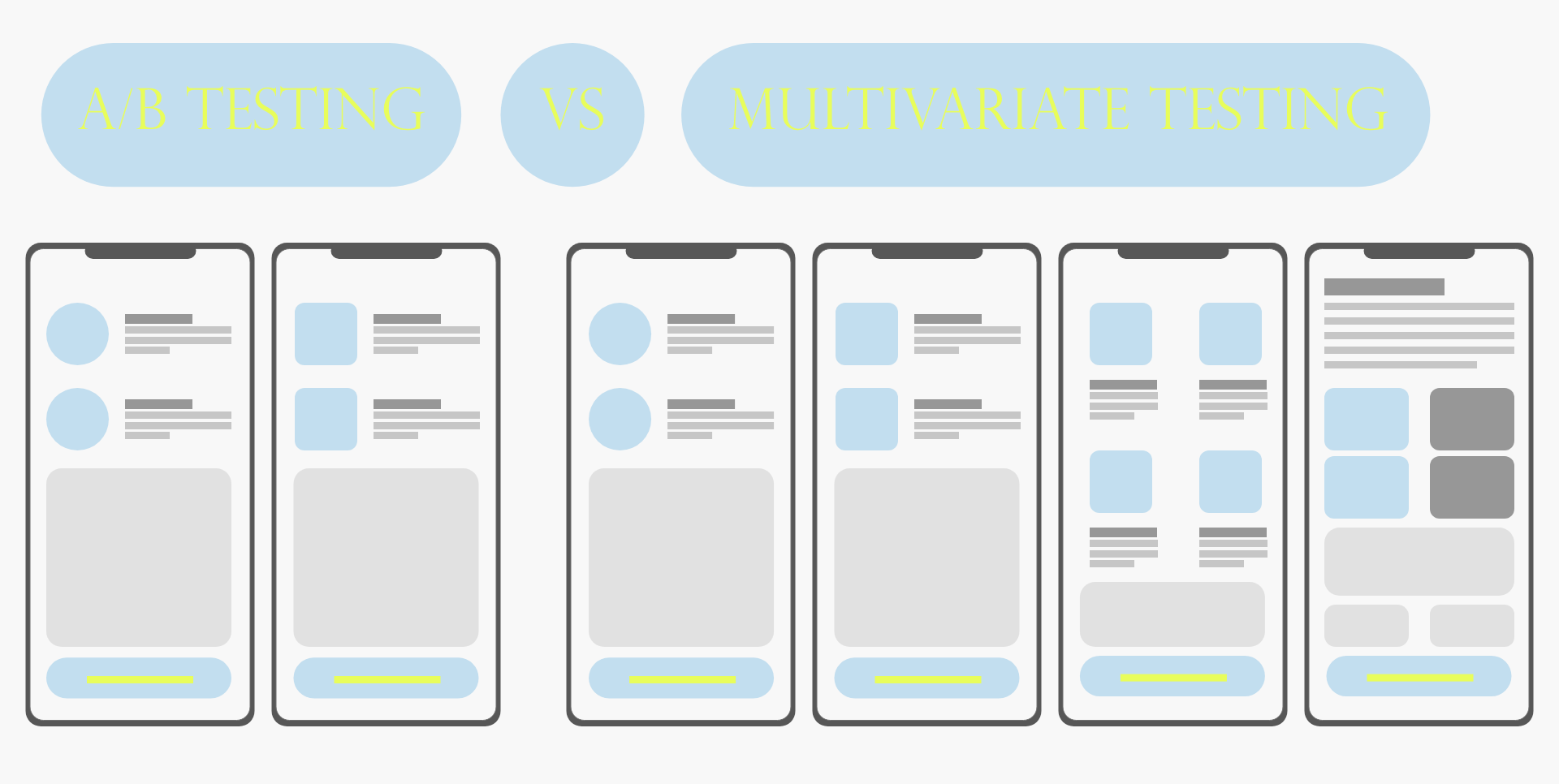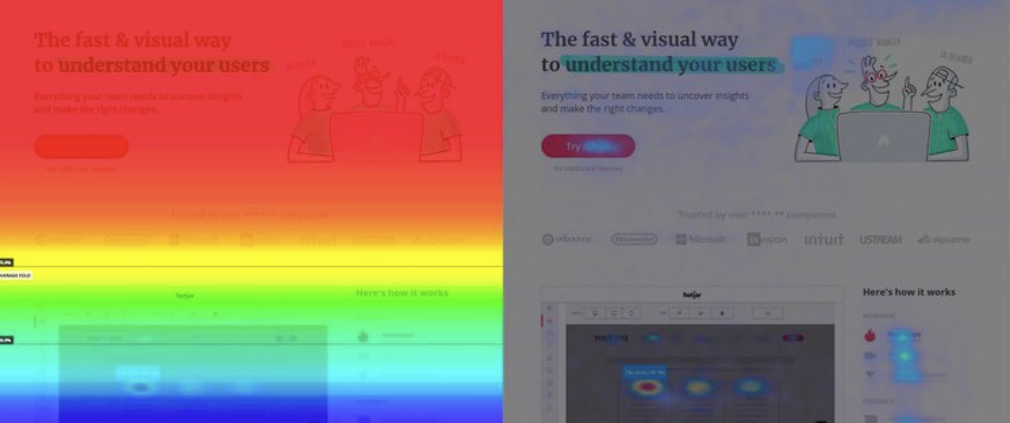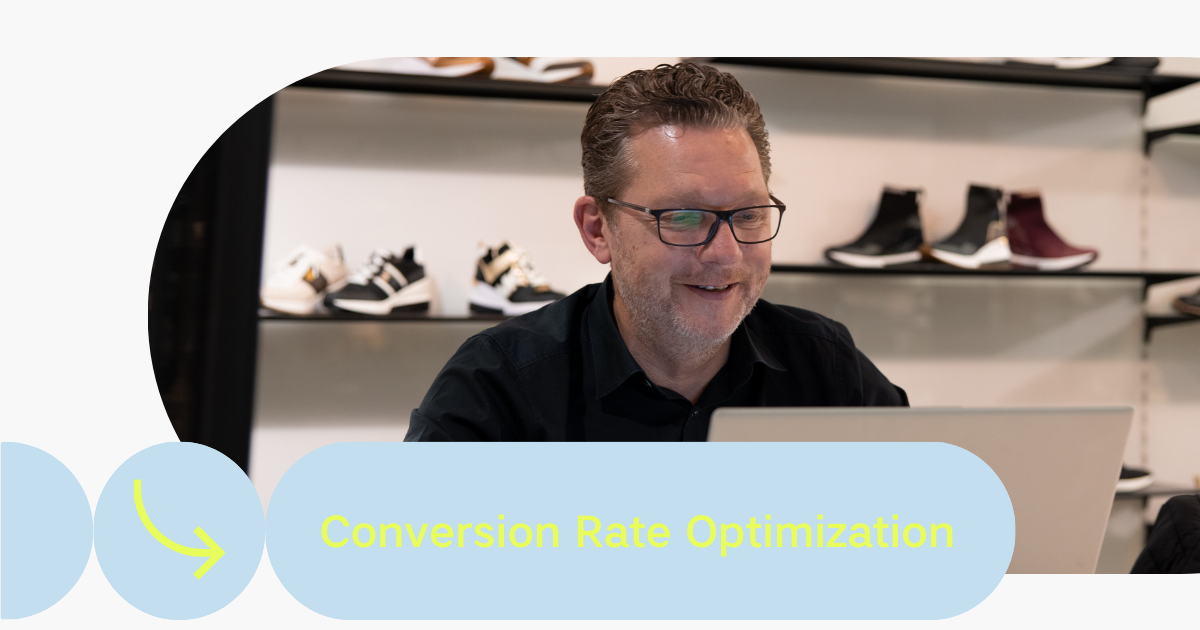Conversion rate optimization or CRO is the activity where you try to increase the percentage of conversions on your website. As we look at what the conversion rate actually is, it’s the ratio between how many visitors or sessions your website receives compared to the sessions that completed a desired goal or conversion like a purchase. The higher your conversion rate, the more successful your marketing and web design is. People are more likely to buy what you offer if the purchase flow on your website works as it should.
As told before, the higher your conversion rate the better. Whatever your goal is on your website, there are ways on how to improve it by running different tests. A low conversion rate could be caused by:
-
- Your site or landing page is slow or difficult to complete a goal.
For example, your checkout is inefficient which leads to consumers dropping out while they’re already interested in buying your product. - What you offer on your website is not valuable enough to your audience or too expensive.
- Your site or landing page is slow or difficult to complete a goal.
As your conversion rate is a very important metric to analyze, we’ve come up with multiple examples of how to optimize and improve it.
- Optimize your website
Start with running A/B or multivariate tests on your website by changing different elements to see which variation drives most conversions. You should have enough traffic on your website to get statistical significance quick enough.

Start with multiple little tweaks on your website or a specific page like your pricing page, content page, homepage or pages that are more important to you based on traffic and exit pages to start optimizing first. From there get into more drastic changes. The most effective elements to test are:
-
- Call-to-action buttons on the homepage: Try different colours, sizes or texts like “Shop now”, “Discover now”, “See more”, etc.
- Test your homepage visuals: Does static work better than dynamic visuals for your homepage? Pictures of your products compared to storytelling visuals, etc.
- What should be placed above the fold and what can be below.
- How does your landing page and website perform on mobile devices?
- Try different layouts of your pop-up sign-up form.
You should not only think about SEO but there are also on-site optimizations that are very important. For example:
-
- Titles: Which copy helped generate the most sales? —> optimizing titles to convert
- Bullet points in your copy —> optimize through tweaking the copy
- Descriptions within your paragraphs —> clearly articulate the benefits of the products
-
- Keywords that you are using: do they appeal? —> use accurate keywords that are relevant to your products.
- Analyse your tests with Hotjar
Hotjar is an analytics tool that helps you collect qualitative data. These tools are heatmaps, funnel tracking, user polls, surveys and more. In this way, Hotjar gives you insight into the visitor behaviour on a website. As soon as you start running A/B tests, you should install a Hotjar on your specific page. This way you’ll be able to get a clear view of which optimizations are better and which are worse.
The collected data will contribute to improving your web design, lowering your bounce rate, fewer drop-offs at the purchase funnel and eventually a higher conversion rate. These optimizations will offer a better customer experience on your website.
You look at recordings of your visitors, make heatmaps or scroll maps to analyse the behaviour. Of course, this is all privacy proof! You have no idea who has been on your website, you can only track their behaviour.
Heatmaps:
Start by analyzing your heatmaps. It shows the behaviour of your visitors on a specific webpage. Here you can see where your users mostly have clicked on.
When your heatmap has collected enough traffic on your website, you can start analysing your heatmap. Here are some tips & tricks on how to analyse this report:
-
- Make sure your CTA’s are being seen & clicked on. Change placement & copy if they don’t perform as expected.
- Place content in the order of importance to your users.
- Track what’s going on behind pop-up forms or login screens. Optimize the whole experience.
Scroll maps:
After analyzing your heatmaps, take a look at your scroll maps. It shows the percentage of visitors that scroll all the way down the landing page. The point to which most of the passing eyes scroll is a perfect spot for a juicy call-to-action like a discount code, new collection, etc. You can analyse which aspects of the website distract the users from taking revenue-driving actions.
Keep in mind to communicate the most important information above the fold so visitors won’t miss this information and also make sure there’s enough clickable above the folder. If not, this might drive potential customers away.
Left –> Scrollmap
Right –> Heatmap

- Landing page optimizations
The landing page can either make visitors look around or make them leave the website right away. It is therefore very important that it is appealing to the potential buyer. Below we have some recommendations for your landing page:
-
- Using high-quality images are not only beneficial for your SEO but also your conversion rate. Nothing more unattractive than bad quality pictures with a low pixel.
- Use testimonials of your customers. Your customers can sell your products the best.
- Landing pages with videos are 50x more likely to show up on Google searches. People interact more with video content than written content.
- Limited scroll length
- Easily to navigate on mobile devices (!)
- Use dynamic recommendations: 35% of all amazon’s revenue comes from dynamic upsells. Show products to your customers that they’ll probably buy too.
Optimizing your conversion rate is a never-ending process of trial and error. Don’t expect that every test will lead to a rise in your conversion rate. Keep testing and iterating and, normally, not every test will work as you expected.
To get started, we have the ideal CRO process:
- Track correct data
- Research and discover
- Plan your tests
- Design and implement
- Refine and iterate
- Repeat the first step
As a marketer, if you are on your website every day, you overlook certain things that are less obvious to your visitors than to yourself. Therefore, make the process on your website as easy as possible on desktop and mobile. The simpler it is, the more conversions. Also, why not get a more unbiased opinion from some outsiders? Combine your own and their insights for the best results.
If you have more questions regarding your conversion rate and how to optimize it, get in touch with the Dotters! Thank you for reading :)
This post is also available in: Dutch




